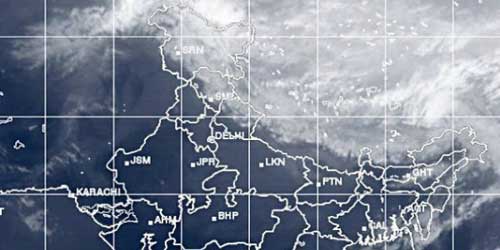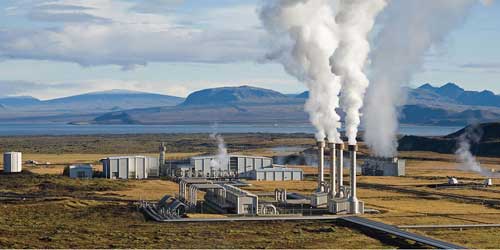A rock is a solid made up of a bunch of different minerals. Rocks are generally not uniform or made up of exact structures that can be described by scientific formulas. Scientists generally classify rocks by how they were made or formed.
Must Read: Minerals: India’s Mineral Resources
Three Major Types of Rocks
Metamorphic Rocks – Metamorphic rocks are formed by great heat and pressure. They are generally found in the Earth’s crust where there is enough heat and to form the rocks. Metamorphic rocks are often made from other types of rock. A sedimentary rock can be changed, or metamorphosed, into a metamorphic rocks such as slate or gneiss. Metamorphic rocks include marble, anthracite, soapstone, and schist.
Igneous Rocks – Igneous rocks are formed by volcanoes. When a volcano erupts, it spews out hot molten rock called magma or lava. Eventually, the magma will cool down and harden, either when it reaches the Earth’s surface or somewhere within the crust. This hardened magma or lava are called igneous rocks. Igneous rocks include basalt and granite.
Sedimentary Rocks – Sedimentary rocks are formed by years and years of sediment compacting together and becoming hard. Generally, something like a stream or river will carry lots of small pieces of rocks and minerals to a larger body of water. These pieces will settle at the bottom and over a really long time (perhaps millions of years), they will form into solid rocks. Sedimentary rocks are shale, limestone, and sandstone.
Also Read: Geothermal Energy
The Rock Cycle
Rocks are constantly changing in what is called the rock cycle. It takes millions of years for rocks to change.
1. Melted rocks or magma is sent to the earth‘s surface by a volcano. It cools and forms an igneous rocks.
2. Next the weather, or a river, and other events will slowly break up this rocks into small pieces of sediment.
3. As sediment builds up and hardens over years, a sedimentary rock is formed.
4. Slowly this sediment rocks will get covered with other rocks and end up deep in the Earth’s crust.
5. When the pressure and heat get high enough, the sedimentary rock will metamorphose into a metamorphic rock and the cycle will start over again.
Space Rocks
There are actually some rocks that come from space called meteorites. They may have different elements or mineral make up than a typical earth rock. Typically they are made up mostly of iron.
Have a Look at: Plateau
Interesting Facts about Rocks
- The word “igneous” comes from the Latin word “ignis” which means “of fire.”
- Ores are rocks that include minerals that have important elements such as metals like gold and silver.
- Sedimentary rocks form layers at the bottoms of oceans and lakes.
- Marble is a metamorphic rocks formed when limestone is exposed to high heat and pressure within the Earth.
- Layers of sedimentary rocks are called strata.
Also, Read:
World’s 10 Greatest Ocean or Seas, Deserts, and Mountains





VELLORE SEPOY REVOLT 1806 A FIRST
SPARK FOR INDEPENDANCE……..
The Vellore Mutiny (July 10, 1806) was
the first instance of a mutiny by
Indian sepoys against the British East
India Company. It predates even the
Indian Rebellion of 1857 by half a
century. The revolt, which took place
in the South Indian town of Vellore,
was rather brief, lasting only one full
day but brutal, as mutineers broke
into the Vellore fort and killed or
injured 200 British troops, before
they were subdued by reinforcements
from nearby Arcot.
The reasons for the mutiny revolved
mainly around resentment against
changes in sepoy dress code in
November 1805. Hindus were
prohibited from wearing religious
marks on their foreheads and
Muslims were required to shave their
beard and trim their moustache. This
created a strong resentment among
the soldiers. In May 1806, some
revolting soldiers were sent to Fort St.
George. Two soldiers — a Hindu and
a Muslim — were given 900 lashes
each and their services terminated.
Nineteen soldiers were punished with
500 lashes each and forced to seek
pardon from the East India Company.
The rebellion was also instigated by
the sons of the defeated Tippu
Sultan, imprisoned at the Vellore fort
since 1799. One of Tipu Sultan’s
daughters was to be married on July 9
1806, and the plotters of the uprising
gathered at the fort under the
pretext of attending the wedding.
Two hours after midnight, on July 10,
the sepoys surrounded the fort and
killed most of the Europeans. The
rebels seized control by dawn, and
raised the flag of the Mysore
Sultanate over the fort. Tipu’s second
son Fateh Hyder was declared King.
However, a British Officer escaped,
and alerted the garrison in Arcot.
Nine hours later, the British 19th
Light Dragoons, led by Sir Rollo
Gillespie, and the Madras Cavalry
entered the fort through gates that
had not been fully secured by the
sepoys. Nearly 350 of the rebels were
killed, and another 350 injured before
the fighting had stopped. Some
accounts have it that 800 rebel
sepoys died.
Comments are closed.